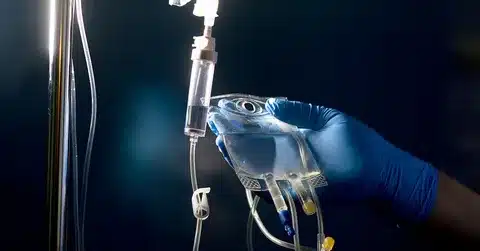IV Sedation vs. General Anesthesia: Understanding the Differences

In the realm of medical and dental procedures, the choice between IV sedation and general anesthesia can significantly impact patient experience and treatment outcomes. Understanding the nuances and differences between these two sedation methods is crucial for both healthcare providers and patients alike.
IV sedation is commonly used in dental procedures and minor surgeries, offering a middle ground between full consciousness and deep sedation. General anesthesia, on the other hand, is necessary for complex surgeries or procedures requiring the patient to be completely still and unaware.
By exploring the distinct characteristics, uses, safety considerations, and recovery processes associated with IV sedation and general anesthesia, patients and healthcare providers can make informed decisions tailored to specific medical needs and individual preferences.
IV Sedation
Definition and Explanation:
- IV sedation involves the administration of sedative drugs directly into the bloodstream via an intravenous line.
- It induces a relaxed, drowsy state while allowing patients to remain conscious and responsive.
Administration and Effects:
- A trained healthcare provider administers IV sedation, carefully monitoring dosage to ensure the desired level of sedation.
- Effects include reduced anxiety, drowsiness, and partial or complete memory loss of the procedure.
- It’s commonly used in dental procedures, minor surgeries, and medical tests where relaxation is needed without complete unconsciousness.
General Anesthesia
Definition and Explanation:
- General anesthesia is a state of controlled unconsciousness induced by powerful medications.
- It renders patients completely unconscious and unresponsive to pain and external stimuli.
Contrasting Depth of Sedation:
- IV sedation provides a lighter level of sedation where patients can still respond to verbal commands and maintain their protective reflexes.
- General anesthesia, in contrast, involves a deeper level of sedation where patients are completely unconscious and unable to respond to stimuli.
Uses and Applications
Common Procedures where IV Sedation is Preferred:
- Dental Procedures: Used for complex extractions, root canals, and other invasive treatments where patient relaxation is essential.
- Endoscopic Procedures: Facilitates comfort during colonoscopies, gastroscopies, and other diagnostic procedures.
- Minor Surgeries: Such as skin lesion removals, biopsies, and minor orthopedic procedures where deeper sedation isn’t required.
Situations where General Anesthesia is Necessary:
- Major Surgery: Involving extensive surgical procedures where complete stillness and unconsciousness are required.
- Complex Medical Procedures: Such as cardiac surgeries, neurosurgeries, and organ transplants where deep sedation and immobility are crucial.
- Pediatric Surgery: Often preferred for children undergoing surgery to ensure they remain completely still and unaware.
Safety and Considerations
Ensuring patient safety is paramount when considering IV sedation and general anesthesia for medical or dental procedures. Both methods have specific considerations that healthcare providers and patients should be aware of:
IV Sedation:
- Generally considered safe when administered by trained professionals.
- Requires careful monitoring of vital signs throughout the procedure.
- Potential risks include respiratory depression, allergic reactions to medications, and rare instances of cardiovascular complications.
General Anesthesia:
- Involves a deeper level of sedation, requiring precise monitoring of vital functions including heart rate, blood pressure, and oxygen levels.
- Risks may include post-operative nausea and vomiting, temporary cognitive dysfunction, and extremely rare but serious complications like malignant hyperthermia.
Both IV sedation and general anesthesia are safe when administered by qualified anesthesia providers in appropriate settings.
Choosing Between IV Sedation and General Anesthesia
When determining the appropriate sedation method for medical or dental procedures, several factors come into play, balancing patient preferences and medical considerations:
Procedure Complexity:
- IV Sedation: Ideal for less invasive procedures where patient comfort and cooperation are essential but complete unconsciousness isn’t required.
- General Anesthesia: Necessary for complex surgeries or procedures requiring precise control over patient physiology and total unconsciousness.
Patient Health and Medical History:
- Considerations such as allergies, underlying health conditions, and medications that may impact sedation choices.
- Anesthesia providers perform thorough pre-operative evaluations to assess patient suitability for each method.
Patient Preferences:
- Some patients may prefer IV sedation due to its lighter sedative effects and quicker recovery times compared to general anesthesia.
- Others may opt for general anesthesia to ensure they are completely unaware and comfortable during more invasive or prolonged procedures.
Safety and Monitoring Requirements:
- IV sedation requires continuous monitoring of vital signs to ensure patient safety while maintaining a moderate sedative state.
- General anesthesia mandates intensive monitoring to manage deeper sedation levels and mitigate potential risks associated with unconsciousness.
Medical Team Expertise and Facility Resources:
Availability of trained anesthesia providers and appropriate medical facilities equipped to handle either sedation method effectively and safely.
Understanding the nuances between IV sedation and general anesthesia is crucial for informed decision-making in medical and dental procedures. Whether opting for the lighter sedation of IV or the deeper unconsciousness of general anesthesia, patient safety, procedure complexity, and individual preferences play pivotal roles. By prioritizing these factors, healthcare providers can ensure optimal patient care and procedural outcomes.





